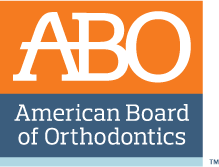Retainers
What is the purpose of a retainer?
Retainers are used to move or straighten teeth or to retain the current position of teeth from further movement. Retainers are used more frequently for the latter, usually after braces have been removed. For the purposes of this question, we will stick to the aspect of retainers used for retention.
Retention is the phase of treatment when orthodontic tooth movement is complete and the teeth are being passively held in their final positions. Usually, this is after braces are removed, and it is fitting to use an appliance referred to as a retainer to maintain the final result.
Retainers are an integral part of orthodontic treatment after the “active” tooth movement phase is completed. Retainers hold the teeth in their final position until some “stability” is achieved. Connective tissue fibers that have been broken down or stretched need to reorganize. This can take up to 2 years.
What types of retainers are there?
Retainers fall in to two main groups: fixed and removable. A fixed (bonded) retainer is cemented or bonded to the teeth to prevent further movement. The placement of the fixed retainer is on the backside of the upper of lower anterior teeth. You can see a picture here. A bonded retainer usually works well on the lower anterior teeth but not so much on the upper. This is because the lower incisor edges usually hit and dislodge a bonded retainer on the upper teeth. Short upper anterior teeth make this an issue. The lower anterior teeth are the most likely to drift, so a bonded retainer works very well for individuals that know they won’t remember to insert a removable retainer each evening at bedtime. However, maintenance-wise, a patient might find that a bonded retainer makes it more difficult to floss, and they also tend to trap plaque, requiring more diligence when cleaning.
Removable retainers come in two main types: the acrylic and wire type (more traditional); and in the last two decades, the clear, vacuum-formed type that is reminiscent of the Invisalign trays. Orthodontists usually refer to the clear retainers by their brand names: Essix or Tru-Tain, which are essentially the same thing.
Most of our patients prefer an Essix-type retainer over a wire retainer for the following reasons: They fit more closely and maintain final tooth position better than the wire-type retainer; they pick up odors less easily than acrylic and wire retainers; and they can protect teeth from the effects of night-time grinding. One downside, however, is that the vacuum-formed retainers do not have the same durability and last only about 2 years. Many adults have asked me why their children did not get a wire retainer after treatment like the parents had years before. The clear retainers are accepted better by patients and thus worn more often than not.
Still, we find wire-type and bonded retainers preferable in certain cases, such as in open-bite treatment. Sometimes, the initial orthodontic problem may dictate the best choice of retainer.
Need new retainers?
We can make you new retainers if your retainers are lost or worn out. You can check the fees here.

